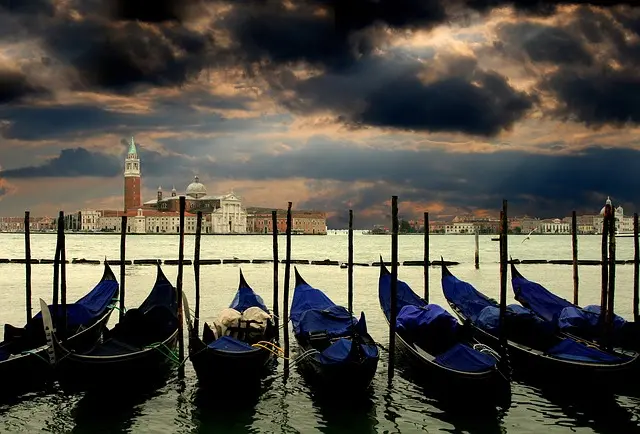
A City on Water
Venice in August remains hot, with the air filled with the briny scent of river water. Yet, this cannot overshadow the allure of the city on water.
Venice (Italian: Venezia), located in northeastern Italy, is a renowned tourist and industrial city and the capital of the Veneto region. It embodies the essence of the Renaissance and is famously the only city in the world without cars. “It is said that God shed tears here, making it even more sparkling and tender, like a romantic dream floating on emerald waves.”
The history of Venice is said to date back to 453 AD, when local farmers and fishermen fled to this Adriatic island to escape nomadic invaders. Shaped like a dolphin, Venice spans less than 7.8 square kilometers and consists of 118 small islands. These are interconnected by 177 canals, which weave through the city like a spider’s web.
Venice’s architecture, painting, sculpture, and opera hold immense significance and influence worldwide. The city is brimming with ancient monuments, including over a hundred churches, bell towers, monasteries, and palaces. The Grand Canal, the city’s longest street, bisects Venice into two parts, its banks lined with renowned buildings and traces of writers, painters, and musicians.
The Grand Canal
The Grand Canal (Canale Grande) is Venice’s main waterway, running in a natural reverse-S shape from St. Mark’s Basilica (Basilica di San Marco) to Santa Chiara Church (Chiesa di Santa Chiara), dividing the city in two. Along its banks are over 100 ancient buildings, dating from the 12th to 18th centuries, once homes to Venetian nobles and wealthy merchants. Exploring the Grand Canal by water bus or gondola allows visitors to take in its majestic architecture.
St. Mark’s Square
St. Mark’s Square (Piazza San Marco), also known as Venice’s central square, has long been the heart of the city’s political, religious, and festive activities. The square is surrounded by the Doge’s Palace, St. Mark’s Basilica, St. Mark’s Campanile, and the administrative buildings. Since the 19th century, it has been the seat of the archbishop and a venue for many Venetian celebrations.
Originally built in the 9th century as a small square in front of St. Mark’s Basilica, the square is named after Mark, the author of the Gospel of Mark, who is venerated as Venice’s patron saint. In 828, two Venetian merchants are said to have smuggled St. Mark’s relics from Alexandria, Egypt, and the same year saw the construction of the basilica, housing his tomb. Both the basilica and the square were named in his honor.
St. Mark’s Square is also the main venue for the Venetian Carnival. It is home to boutique shops with exquisite window displays, elegant cafés, bars, and restaurants, making it the ideal place for a leisurely walk.
